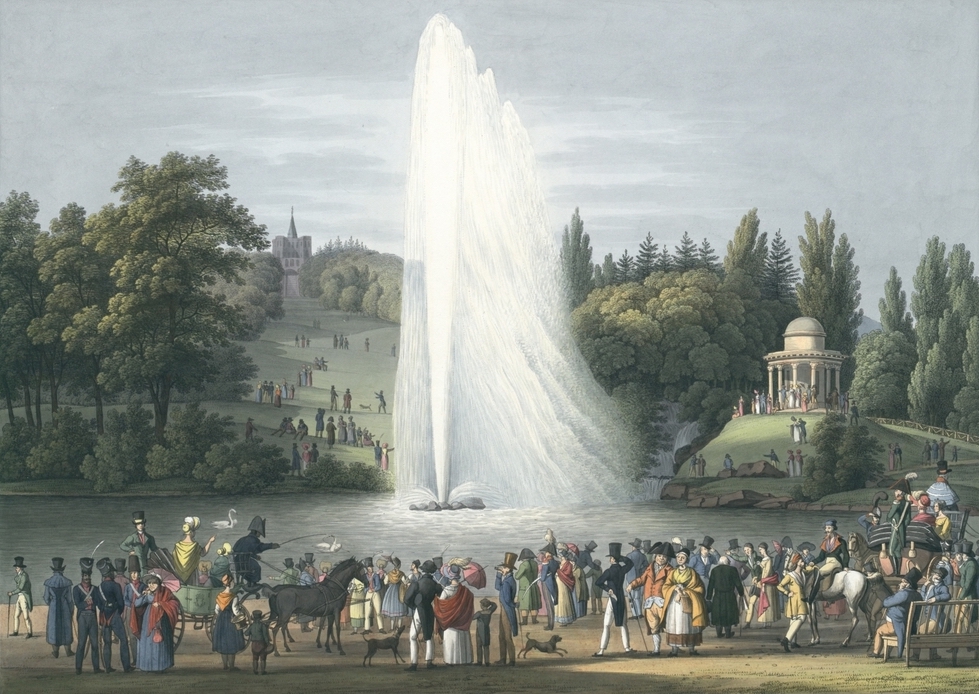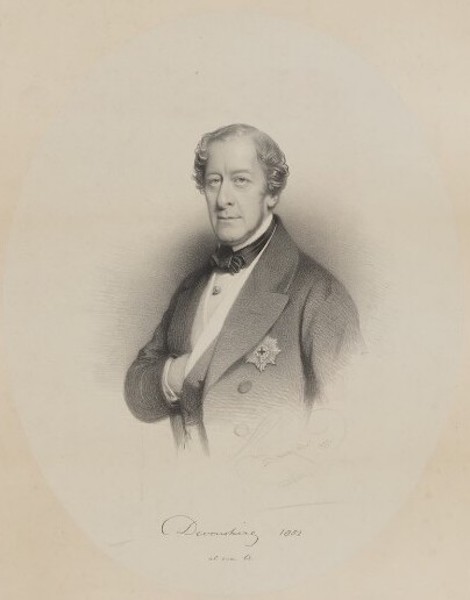This is a short excerpt from Professor Clayton's essay, "Paxton's Legacy: Crystal Palace to Millennium Dome," in Victorian Prism: Refractions of the Crystal Palace [Review]. For full details of the book, see the bibliography. The last portrait added here comes, with thanks, from the National Portrait Gallery, London, which holds its copyright.

Photograph of Sir Joseph Paxton (from Priestley 68).
Paxton possessed many of the traits most often associated with the Victorian male character: indomitable energy, fortitude in the face of reversals, resourcefulness, a can-do spirit, and supreme confidence in his own opinion. He was the nominal head of a large, bustling family, complete with a scapegrace son and six devoted daughters, but his wife did all the household work. He professed the deepest obligations to this woman, who seemed to have been the person who taught him to write and who managed his business affairs with skill, but he left her alone for long periods as he traveled on the Continent and was lionized in London. In short, it would be easy to find Paxton insufferable, were it not for some other qualities of character, which do not surface in the standard tale.

The great fountain in the garden of Wilhelmshöne near Cassel in 1850 (in the public domain, via PICRYL.com).
These qualities are not those usually associated with Victorian masculinity. They are evanescent, darting, as light, yet resilient, as his glass constructions. He takes such an unexpected delight in inventing outlandish things. He can be frolicsome. His buildings are fantasies; his fountains, fireworks, and light shows are like something out of Virginia Woolf's Orlando. I like the story of his bribing the guards at Cassel to let him climb fully dressed into the great fountain there to measure the size of its jets. What fun he must have had holding [his daughter] Annie's hand as she stepped gingerly out onto the surface of a leaf. It is like a missing adventure from Alice in Wonderland. The spirit of science fiction runs through many of his creations. For the Crystal Palace he imagined a raised trolley, running just under the roof, that would carry spectators from one end of the pavilion to the other. After the Exhibition had ended, he submitted a proposal to build an elevated railway and shopping arcade, which would encircle all of London like a ring road, suspended thirty feet above ground and covered in glass. He planned an underground train system linking all the boroughs of London, forty years before the first subway was dug anywhere.

William George Spencer Cavendish, 6th Duke of Devonshire, lithograph of 1852 by Charles Baugniet, printed by M & N Hanhart, NPG D35160.
This independence of mind extended to the way in which he conducted his private life.... The story of Paxton's relationship with the Sixth Duke of Devonshire, who hired him when he was a mere garden boy and who eventually entrusted him the management of all his vast estates and business affairs, is a strange and affecting tale (280-81).
Note: Professor Clayton goes on to point out how unusual it must have been for a member of the aristocracy to form such a close and enduring relationship with a man of Paxton's background. He suggests that their bond, while not necessarily anything other than one of true friendship, indicates "structures of feeling that unsettle the accepted picture of the past" (282). — Jacqueline Banerjee
Bibliography
Clayton, Jay. "Paxton's Legacy: Crystal Palace to Millennium Dome." Victorian Prism: Refractions of the Crystal Palace. Edited by James Buzard, Joseph W. Childers and Eileen Gillooly. Charlottesville and London: University of Virginia Press, 2007. 270-90.
Priestley, J. B. Victoria's Heyday: 1837-1901. New York: Harper & Row, 1977.
Created 31 July 2019